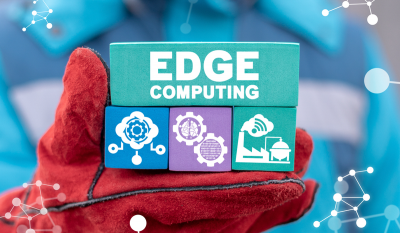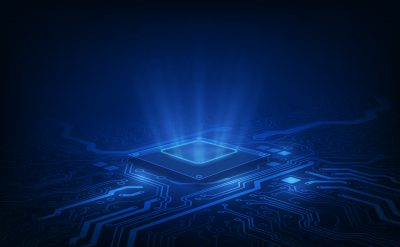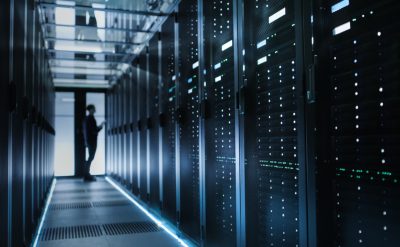Modernization is one of the most basic infrastructural requirements for modern enterprises. Data centers are currently running the risk of falling behind in the technologically and hampering their competitiveness, making it completely vulnerable when it comes to the data center. Without any security updates, the complete environment connected with a data center will be vulnerable to all types of new and complicated cyber attacks. Based on the recent types of cyber attacks, we can see that there are hackers who are developing malware that is sophisticated and penetrate the data center infrastructure if the security solution isn’t updated. What makes such data center technologically vulnerable, is the outdated security tools that tend to offer gaps in the environment. In addition to security issues, changing demands in the data center environment is forcing the managers to do more with less, it means that the IT managers are using the complete capacity of the infrastructure before delivering the applications and Information technology (IT) at an accelerated pace.
The data center evolution is marred by complexity from the user’s requirements, cloud development, and legacy environment that is supposedly serving the present data and application requirements. Almost 80 percent of the Chief Information Officers (CIOs) strategic plans are delayed due to legacy infrastructure according to the recent survey. Legacy infrastructure is not being built to support the current consumer demands for infrastructure. Major challenges such as the exponential proliferation of data, Internet of Things (IoT), Big Data, Mobile Workforce, increase in the cost of power data centers, and balance between selecting the hybrid on-premises and off-premises is making data centers providers look for an impeccable solution in technology. The modern data center strategy cannot just simply mean that they can be met with aging infrastructure. With modernization comes the requirement of agility that can be enabled with innovation, the users will be quickly able to transform them with changing demands. With the adoption of modern day technology in the data center can assist the enterprises to boost the companies revenue, cut costs, and even develop a complete infrastructure for efficiency and reliability.
The new technology seems to satisfy modern requirements, making the agility requirement become easier and simpler. Data center automation sets the infrastructure for the entire organization on the same page and reduces siloing, errors, and manually set for the infrastructure requirement. To effectively manage the data centers, it takes an upfront work demanding time and expense, but the long-term payoff will assist the enterprise’s plans of modernization. Implementing the four-step process to modernize and update the infrastructure will assist the data centers to keep the data safe and secured.
Process for Technology update
The ability to be cohesive and mindful about the technology vertical is deciding on the retiring legacy equipment depends on keeping a close track on every asset present in the data center during its entire lifespan. Keeping the tab on time when the asset is received, it can be any type of asset whether its application or infrastructure, having a complete asset lifecycle plan means that getting the scenario of requisitioned or purchased to the day it is decommissioned. It assists the IT teams in knowing whether the infrastructure is under the exact age of each old piece of equipment and what is warranty lifecycle when it is at the end of its useful lifecycle. Data center infrastructure management (DCIM) software tends to keep track of all IT assets by knowing the components that are coming for the retirement and the power consumption of each equipment; it will also send an alarm and alert warning during a malfunction. Data center infrastructure management (DCIM) workflow assist the team in developing a complete file of logs that looks in work performance, the person who did it, why they did it-reason. Having a single repository means that information, resources are scheduled more easily, working orders are generated with each step and automation will ensure that there is no knowledge gap in the team. Consistency and Accountability increase the complete team’s productivity.
Power Situation
According to the recent study by Hexa research, the U.S. economy losses close to $550 billion annually due to power outages and other electric failures. Ensure that your data centers power source is tested and power clarified. The process flow set-in for the power tasks will assist the data center during a power failure with keeping in mind which of the critical application will need external power and what will be the effect of complete power failure. DCIM software will have the ability to perform virtual power failure simulation so that the data center team can prepare what would happen to the critical infrastructure if a particular system or if a piece of equipment fails.
Integration with ITSM process management
Connecting the DCIM with Information Technology Service Management (ITSM) solution will be one of the most vital steps in data center modernization plan. ITSM systems provided by the HPE and ServiceNow should be integrated with data center systems and share information back and forth. Changes originating in the ITSM change system must be passed to the data center for execution. It provides a link between the facilities and IT personnel with prebuilt connectors between the ITSM and DCIM systems to simplify the integration greatly.
Segmentation of workload
Flexibility is one of the most important goals when you’re seeking to modernize the data center. The best place that can be used to run the complete setup of the data center workload will be dependent on the organization’s priorities for the workload. An organization needs to solve some of the following issues:
1. Does your biggest concern include the cost-effectiveness?
2. Does your data center performance affect the particular workload?
3. Does the data belong to the edge facility that will mean reducing the latency by bringing the computing and analysis deliver a better customer experience?
4. Compliance can be issued if the data is stored remotely making even the security a requirement for the enterprises?
Hybrid data center strategy tends to make the enterprises more flexible in dealing with different workloads and achieve the goals.
Conclusion
When it comes to new data center solution, enterprises are bound to be marred with different requirements even virtualization also allows organizations to create a virtual version of the required system resources whether it’s hardware platforms, storage devices, or software platforms. A DCIM solution offers complete management that will assist the enterprise in knowing more about the current requirements.
To know more, you can download the latest whitepapers on data center solutions.













